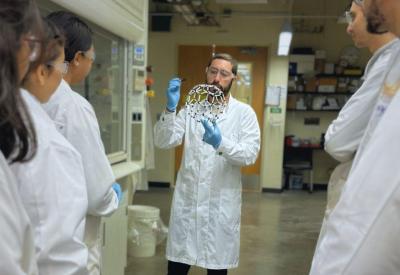Researchers expand previous development for wider applications in perovskite solar cells
Researchers from King Abdullah University of Science and Technology (KAUST), Kaunas University of Technology and Helmholtz-Zentrum Berlin (HZB) recently improved on a previous development of record-breaking solar cells a few years ago, by expanding their invention: the self-assembled monolayers (SAMs) can now be applied not only in inverted but also in regular structure perovskite solar cells.
Self-assembling molecules arrange themselves into a single-molecule-thick layer and in this case, they act as an electron-transporting layer in solar cells.




